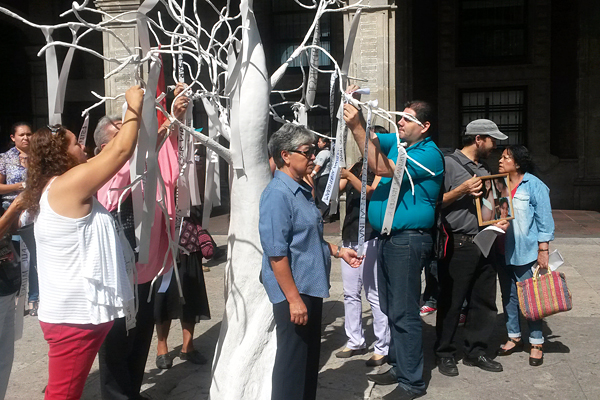
Mission
CATW-LAC works at the local, regional, national and international level to promote women’s human rights, including the right to live free of violence and sexual exploitation. The organization designs and applies grassroots models for the prevention, protection and prosecution of those involved in the trafficking of persons for sexual exploitation, and it promotes those models to government agencies, policy and lawmakers and civil society to eradicate human trafficking.
Life Challenges of the Women Served
Economic, social, legal and political inequalities, lack of opportunities and social exclusion that women and girls face provide the social conditions that give rise to contemporary forms of slavery, especially human trafficking and commercial sexual exploitation. The majority of victims are female, economically and racially marginalized, and are most often victims of prior physical and sexual violence. They are especially vulnerable to recruitment due to the absence of real, legitimate economic alternatives and opportunities. The lack of prevention, protection, and assistance programs in Latin America and the Caribbean greatly exacerbates this problem.
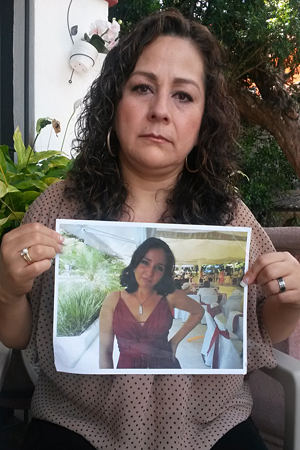 The number of women and girls disappearing in Mexico is increasing, mainly in communitie under the control of the drug cartels and organized crime, particularly in the States of Michoacán, Coahuila, Tamaulipas, San Luis Potosí, Estado de México, Hidalgo, Chiapas, Guerrero, Oaxaca, and Nuevo Leon, and in the Central American Region, where CATW-LAC has documented hundreds of cases and where families live under threat of organized crime. This problem presents the need to sustain and expand CATW-LAC’s program to strengthen its services, including legal representation. This would enable the legal team to increase travel more to the families of victims, insuring better access to justice and increased search efforts.
The number of women and girls disappearing in Mexico is increasing, mainly in communitie under the control of the drug cartels and organized crime, particularly in the States of Michoacán, Coahuila, Tamaulipas, San Luis Potosí, Estado de México, Hidalgo, Chiapas, Guerrero, Oaxaca, and Nuevo Leon, and in the Central American Region, where CATW-LAC has documented hundreds of cases and where families live under threat of organized crime. This problem presents the need to sustain and expand CATW-LAC’s program to strengthen its services, including legal representation. This would enable the legal team to increase travel more to the families of victims, insuring better access to justice and increased search efforts.
Women and girls from the most oppressed, exploited and vulnerable groups in society are the most likely to be exploited by traffickers. The demand for women and girls for the purpose of commercial sexual exploitation is the root cause of human trafficking. In Latin America and the Caribbean, the rate of organized crime and trafficking in persons is staggering and government corruption is pervasive. This results in a serious problem as well as a lack of social services in response to the problem on behalf of the Government of Mexico, which creates a serious need for civil society organizations to survey the government agencies and assist in the search for and rescue of trafficking victims.
CATW-LAC aims to guarantee access to justice and due diligence to 220 women and children missing and/or victims of human trafficking or commercial sexual exploitation, most ages 6 – 36. The majority of cases receiving legal assistance and representation are from victims in extreme poverty, social exclusion and victims of organized crime, which creates extreme barriers in their ability to access justice and services such as paid legal services.
The Project
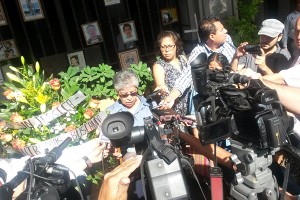 The main goal of the Access to Justice and Due Diligence for Sex Trafficking Victims’ Red Alert System is to achieve justice and due diligence for victims of contemporary forms of slavery, including trafficking and all forms of commercial sexual exploitation, and their families in the Latin American and Caribbean region.
The main goal of the Access to Justice and Due Diligence for Sex Trafficking Victims’ Red Alert System is to achieve justice and due diligence for victims of contemporary forms of slavery, including trafficking and all forms of commercial sexual exploitation, and their families in the Latin American and Caribbean region.
The Red Alert System is an innovative system that consolidates the search for victims of contemporary forms of slavery, especially trafficking victims and other forms of commercial sexual exploitation such as forced marriages, debt bondage, servitude, abduction or illegal adoptions, forced begging, forced labor, and domestic slavery. It includes a comprehensive victim protection program:
- Promotion and dissemination of cases of missing women and children in trafficking-related crimes or contemporary forms of slavery.
- Legal advisory and representation during the search process and post rescue to guarantee the right of access to justice.
- Medical and psychological counseling to families and victims pre and post rescue.
- Humanitarian services for families and victims, including travel fares, per diem, clothing, personal articles, housing, food, transportation and taxis, reunification and relocation expenses, medicine and lab exams.
- Emergency shelter
- Transitional homes
- Education, vocational training and productive projects, which includes physical activities and alternative therapies.
- The Statistical and Geo-referenced Data System (SGDS) which enables CATW-LAC to produce the only set of hard data (yearly) to document the disappearances of women and children into contemporary forms of slavery networks, including trafficking and all forms of slavery, servitude and exploitation.
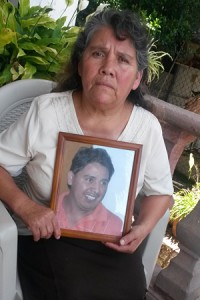 The first component of the Red Alert System is to open and upload the missing persons case on the CATW-LAC website, which has two sections, looking for and located. After a report of a missing person is received, CATW-LAC´s team starts an investigation, which begins with establishing direct contact with family members of the victim. Upon receiving consent from the victim’s family, CATW-LAC creates a new case file. With the family’s authorization, a photo of the victim is uploaded to the webpage and in social media (mass media, Twitter, Facebook, Causes) and media campaigns through press bulletins. CATW-LAC also advises the family of all services CATW-LAC provides through the RAS.
The first component of the Red Alert System is to open and upload the missing persons case on the CATW-LAC website, which has two sections, looking for and located. After a report of a missing person is received, CATW-LAC´s team starts an investigation, which begins with establishing direct contact with family members of the victim. Upon receiving consent from the victim’s family, CATW-LAC creates a new case file. With the family’s authorization, a photo of the victim is uploaded to the webpage and in social media (mass media, Twitter, Facebook, Causes) and media campaigns through press bulletins. CATW-LAC also advises the family of all services CATW-LAC provides through the RAS.
Once the details are confirmed, CATW-LAC issues the Red Alert notification to federal and state authorities and law enforcement to push for the location of the victim. CATW-LAC’s field investigator gathers information from the victim’s cell phone, email account and social networks. In some cases, CATW-LAC receives reports from the public with information as to where the victim was last seen. If the family chooses to receive legal counsel and representation, they are assisted throughout the entire case process and follow up until access to justice and due diligence is achieved, presenting all the necessary details of the case before the court.
When the victim is rescued alive, CATW-LAC assists with reintegration support, health services, shelter, medical attention and medication, relocation services, legal and psychological assistance, protection measures and construction of a new life project. In situations where the victim has been murdered, CATW-LAC continues to provide legal and psychological assistance to the family.
The RAS also compiles all cases and their information into a database, which includes socio-demographic data of the victim and family, facts related to the disappearance (place of origin, transit, destination, and data of perpetrators, type of exploitation or slavery and if organized crime is involved), psychological assistance for the families and victims, humanitarian services, including medical attention, education, occupational therapy, percentage of located victims, percentage of impunity and more.
Sustainable Development Goals
![]()
![]()
Questions for Discussion
- Why do you think human trafficking is such a fast growing crime?
- How do think projects like the Red Alert System will aid in stemming the increase of crimes?
- How do you think this type of project could empower other crime victims?
How the Grant Will be Used
DFW’s donation of $50,000 funds the Legal Advisory and Representation Program of the Red Alert System and includes salaries for a legal coordinator who will be responsible for the criminal processes, and two legal officers who will be responsible for legal counsel and representation before the federal or local prosecutors, as well as follow up of the investigations. The budget also includes office and printing expenses, transportation, gas and necessary airfare to allow transportation for victims, their families and staff to attend trial and meet for legal advising and follow-up.
The project is expected to directly impact 220 women and children and indirectly impact 400 people, primarily the families of missing/rescued victims. It is estimated that 15,000 people will indirectly benefit from the project’s preventative measures.
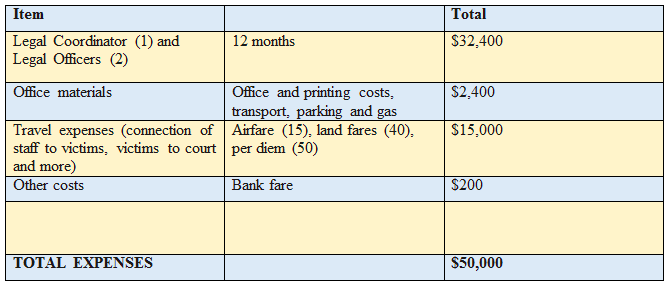
Why We Love This Project/Organization
We love this project’s focus on promoting women’s human rights, and the right to live free of violence and sexual exploitation. CATW-LAC does this by developing programs and campaigns to protect and assist victims, provide restitution of violated human rights, prosecute traffickers and support the development and reform of federal and state laws, thereby strengthening civil society in Latin America and the Caribbean.
Evidence of Success
In its nine years of operation, the Red Alert System is responsible for the successful rescue and/or location of 1,314 victims in Mexico and abroad. In 2014, CATW-LAC worked on 228 cases of victims missing due to human trafficking and forms of commercial sexual exploitation: 78 new and 150 from previous years. Of the 228 cases, 212 were female victims (93 percent). CATW-LAC was able to rescue/locate 84 victims (37 percent). Of those, 69 were rescued alive (82 percent) and 15 victims were found deceased (18 percent). At the time of the grant application, 114 victims had not been located. CATW-LAC began 2015 with 144 unresolved cases. During 2014, it provided legal assistance and representation in 86 cases.
Voices of the Girls
In February 2014, KB was brought to CATW-LAC’s Transitional Homes Program and provided housing, food, personal articles, medicines and counseling for her and her baby. She was enrolled in the Education, Vocational Training and Productive Projects Program, which included a full scholarship to the Ibero-American University, Campus Sta. Fe, studying Pedagogics. She still receives legal assistance and representation, counseling and medical attention for her and her baby. Her perpetrator never gave their real name and address and as a result, the case was declined by the Prosecutors’ Office of the State of Puebla, rendering no full justice to KB’s case. KB participates in quarterly meetings where the victims are consulted about the services provided by the Red Alert System and she has also been involved in training other victims both in vocational training and productive projects. The organization will continue to provide assistance, protection, and required services as KB moves towards empowerment, rebuilding her life and gaining the necessary tools for her future and her baby.
About the Organization
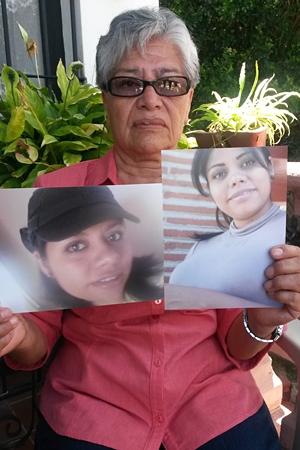 The Coalition Against Trafficking in Women (CATW) is a non-governmental organization that works to end human trafficking and the commercial sexual exploitation of women and girls worldwide. CATW is the world’s first organization to fight human trafficking internationally and is the world’s leading abolitionist organization. Since 1988, CATW has provided widely recognized leadership at local, national, regional and international levels, in promoting policy and educational measures to raise awareness about the root causes of human trafficking. CATW holds Special Consultative Status with the United Nations Economic and Social Council (ECOSOC) and was a key consultant at the UN Transnational Organized Crime Meeting from 1999-2000, the outcome of which was the Palermo Protocol, the world’s most recognized legal instrument on human trafficking.
The Coalition Against Trafficking in Women (CATW) is a non-governmental organization that works to end human trafficking and the commercial sexual exploitation of women and girls worldwide. CATW is the world’s first organization to fight human trafficking internationally and is the world’s leading abolitionist organization. Since 1988, CATW has provided widely recognized leadership at local, national, regional and international levels, in promoting policy and educational measures to raise awareness about the root causes of human trafficking. CATW holds Special Consultative Status with the United Nations Economic and Social Council (ECOSOC) and was a key consultant at the UN Transnational Organized Crime Meeting from 1999-2000, the outcome of which was the Palermo Protocol, the world’s most recognized legal instrument on human trafficking.
The Coalition Against Trafficking in Women – Latin America and the Caribbean (CATW-LAC) was founded as the Latin American and Caribbean (LAC) branch of CATW in 1990 by a group of women, chaired by the Economist Zoraida Rodríguez, during the International Conference held by CATW in Bangladesh.
CATW-LAC originally established its headquarters in Caracas, Venezuela. In 2002, the headquarters moved to Mexico City. Since 2002, CATW-LAC has built a network of 26 nongovernmental organizations in 25 countries within the LAC region, working in prevention, protection and assistance of trafficking victims, and the prosecution of traffickers, pimps and exploiters. CATW-LAC provides services and training throughout the entire LAC region. CATW-LAC implements an innovative training model to educate young men and boys about the construction of traditional masculinity, sexual behavior, and the consequences of the demand for paid sex while promoting an alternative conception of male sexuality based on gender equality. CATW-LAC educates law enforcement and government officials about the international and domestic legal tools available to combat all contemporary forms of slavery, especially trafficking and commercial sexual exploitation. This led to the creation of the first victim-centered protection protocol and code of conduct for law enforcement.
Where They Work
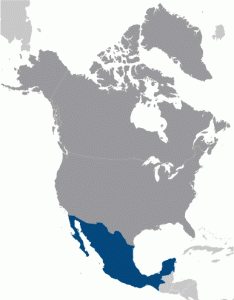
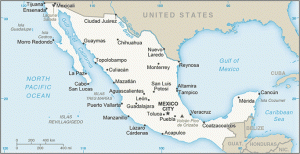 CATW-LAC is based in Mexico City, the nation’s capital. A little over half the country’s population lives below the poverty line. Problems facing Mexico include the scarcity of hazardous waste disposal facilities, rural to urban migration, a lack of clean water, deforestation, serious air and water pollution in the national capital and urban centers along US-Mexico border and more. The country also faces problems with corruption and is considered a major drug production and transit nation. Major drug syndicates control the majority of drug trafficking throughout the country. Mexico’s $2.2 trillion economy has become increasingly oriented toward manufacturing in the 22 years since the North American Free Trade Agreement (NAFTA) entered into force. Per capita income is roughly one-third that of the US, and income distribution remains highly unequal.
CATW-LAC is based in Mexico City, the nation’s capital. A little over half the country’s population lives below the poverty line. Problems facing Mexico include the scarcity of hazardous waste disposal facilities, rural to urban migration, a lack of clean water, deforestation, serious air and water pollution in the national capital and urban centers along US-Mexico border and more. The country also faces problems with corruption and is considered a major drug production and transit nation. Major drug syndicates control the majority of drug trafficking throughout the country. Mexico’s $2.2 trillion economy has become increasingly oriented toward manufacturing in the 22 years since the North American Free Trade Agreement (NAFTA) entered into force. Per capita income is roughly one-third that of the US, and income distribution remains highly unequal.
A Closer Look: What is human trafficking?
It seems unthinkable that in 2016 humans could be exploited, kidnapped or sold into modern day slavery. But it happens with great regularity – more often than many realize. According to the United Nations Office on Drugs and Crime, human trafficking is the acquisition of people by improper means such as force, fraud or deception, with the aim of exploiting them. It happens all across the globe.
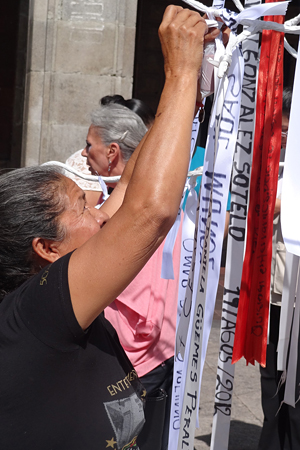 In a 2012 study published by the United Nations High Commissioner for Refugees, human trafficking was ranked as the fastest growing criminal enterprise in the world. Because many victims do not report their abduction, exploitation or captivity, it is impossible to garner exact numbers. However, the U.S. State Department estimated in 2008 that the number was between 4 million and 27 million. In the region served by CATW-LAC, conservative official data estimates that 25,600 people have disappeared over the last five years and approximately 60,000 victims have been killed. In the last seven years, 55,000 unidentified bodies were sent to common graves, but the total number of disappeared victims and those buried in clandestine graves because of the activities and crimes of organized crimes is estimated to be substantially higher.
In a 2012 study published by the United Nations High Commissioner for Refugees, human trafficking was ranked as the fastest growing criminal enterprise in the world. Because many victims do not report their abduction, exploitation or captivity, it is impossible to garner exact numbers. However, the U.S. State Department estimated in 2008 that the number was between 4 million and 27 million. In the region served by CATW-LAC, conservative official data estimates that 25,600 people have disappeared over the last five years and approximately 60,000 victims have been killed. In the last seven years, 55,000 unidentified bodies were sent to common graves, but the total number of disappeared victims and those buried in clandestine graves because of the activities and crimes of organized crimes is estimated to be substantially higher.
The problem looms especially large in Mexico, where, for economic reasons, a large number of people migrate within the country. Women and children are the most vulnerable, as they form a large percentage of the migrant group and run a greater risk of being trafficked, raped, and otherwise sexually and physically abused or exploited. As many as 60 percent of female migrants will face sexual abuse as they migrate through the country. With the increasing globalization of the economy, free market policies, and effects of the financial crisis on the international level, trafficking in women and children, including all forms of commercial sexual exploitation has become a low risk, high profit activity, attracting opportunity seeking organized crime groups, as well as individual traffickers. In the last six years, CATW-LAC has identified new methods of trafficking by organized crime, including transporting and delivery of drugs (mules and couriers), watchers and informers, “sicarias” (paid killers), and sexual slaves to the heads of the cartels or trafficking rings.
Learn more: Though sex trafficking may be one of the most recognizable forms, the U.S. State Department defines several categories of human trafficking:
- Forced Labor: Also known as involuntary servitude, forced labor may result when unscrupulous employers exploit workers made more vulnerable by high rates of unemployment, poverty, crime, discrimination, corruption, political conflict, or even cultural acceptance of the practice. Immigrants are particularly vulnerable, but individuals also may be forced into labor in their own countries. Female victims of forced or bonded labor, especially women and girls in domestic servitude, are often sexually exploited as well.
- Sex Trafficking: When an adult is coerced, forced, or deceived into prostitution – or maintained in prostitution through coercion – that person is a victim of trafficking. All of those involved in recruiting, transporting, harboring, receiving, or obtaining the person for that purpose have committed a trafficking crime. Sex trafficking can also occur within debt bondage, as women and girls are forced to continue in prostitution through the use of unlawful “debt” purportedly incurred through their transportation, recruitment, or even their crude “sale,” which exploiters insist they must pay off before they can be free. It is critical to understand that a person’s initial consent to participate in prostitution is not legally determinative; if an individual is thereafter held in service through psychological manipulation or physical force, that person is a trafficking victim and should receive the benefits outlined in the United Nations’ Palermo Protocol and applicable laws.
- Bonded Labor: One form of coercion is the use of a bond, or debt. Often referred to as “bonded labor” or “debt bondage,” the practice has long been prohibited under U.S. law by its Spanish name, peonage, and the Palermo Protocol calls for its criminalization as a form of trafficking in persons. Workers around the world fall victim to debt bondage when traffickers or recruiters unlawfully exploit an initial debt the worker assumed as part of the terms of employment. Workers may also inherit intergenerational debt in more traditional systems of bonded labor.
- Debt Bondage Among Migrant Laborers: Abuses of contracts and hazardous conditions of employment for migrant laborers do not necessarily constitute human trafficking. However, the burden of illegal costs and debts on these laborers in the source country, often with the support of labor agencies and employers in the destination country, can contribute to a situation of debt bondage. This is often exacerbated when the worker’s status in the country is tied to the employer in the context of employment-based temporary work programs and there is no effective redress for abuse.
- Involuntary Domestic Servitude: A unique form of forced labor is the involuntary servitude of domestic workers, whose workplace is informal, connected to their off-duty living quarters, and not often shared with other workers. Such an environment, which often socially isolates domestic workers, is conducive to nonconsensual exploitation since authorities cannot inspect private property as easily as formal workplaces. Investigators and service providers report many cases of untreated illnesses and, tragically, widespread sexual abuse, which in some cases may be symptoms of a situation of involuntary servitude. Ongoing international efforts seek to ensure that not only that administrative remedies are enforced but also that criminal penalties are enacted against those who hold others in involuntary domestic servitude.
- Forced Child Labor: Most international organizations and national laws recognize that children may legally engage in certain forms of work. There is a growing consensus, however, that the worst forms of child labor should be eradicated. The sale and trafficking of children and their entrapment in bonded and forced labor are among these worst forms of child labor. A child can be a victim of human trafficking regardless of the location of that exploitation. Indicators of forced labor of a child include situations in which the child appears to be in the custody of a non-family member who has the child perform work that financially benefits someone outside the child’s family and does not offer the child the option of leaving. Anti-trafficking responses should supplement, not replace, traditional actions against child labor, such as remediation and education. However, when children are enslaved, their abusers should not escape criminal punishment by virtue of longstanding patters of limited responses to child labor practices rather than more effective law enforcement action.
- Child Soldiers: Child soldiering can be a manifestation of human trafficking where it involves the unlawful recruitment or use of children—through force, fraud, or coercion—as combatants, or for labor or sexual exploitation by armed forces. Perpetrators may be government forces, paramilitary organizations, or rebel groups. Many children are forcibly abducted to be used as combatants. Others are made unlawfully to work as porters, cooks, guards, servants, messengers, or spies. Young girls can be forced to marry or have sex with male combatants. Both male and female child soldiers are often sexually abused and are at high risk of contracting sexually transmitted diseases.
- Child Sex Trafficking: According to UNICEF, as many as two million children are subjected to prostitution in the global commercial sex trade. International covenants and protocols obligate criminalization of the commercial sexual exploitation of children. The use of children in the commercial sex trade is prohibited under both U.S. law and the Palermo Protocol as well as by legislation in countries around the world. There can be no exceptions and no cultural or socioeconomic rationalizations preventing the rescue of children from sexual servitude. Sex trafficking has devastating consequences for minors, including long-lasting physical and psychological trauma, disease (including HIV/AIDS), drug addiction, unintended pregnancy, malnutrition, social ostracism, and death.
(Source: U.S. State Department, state.gov)
Source Materials
CATW-LAC, UNHCR, UNODC, U.S. State Department
